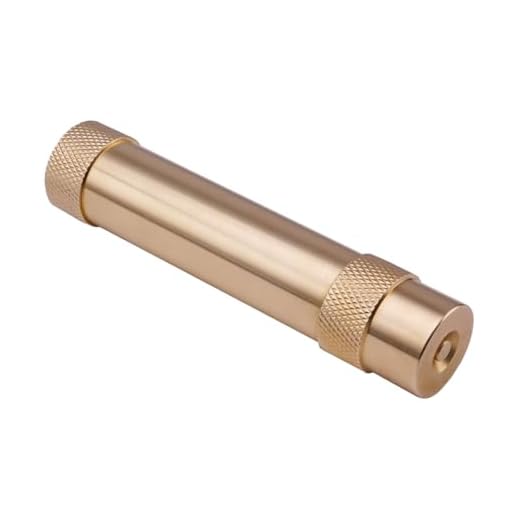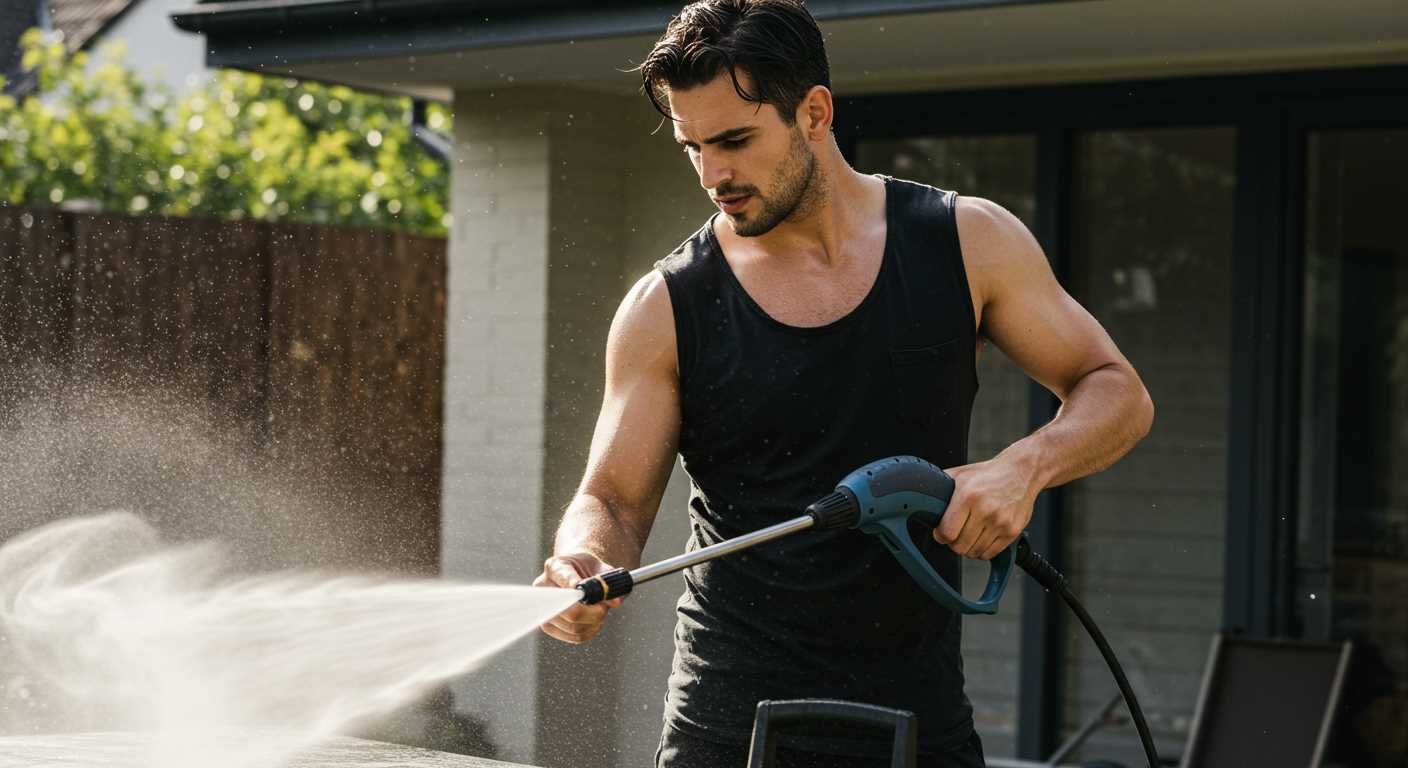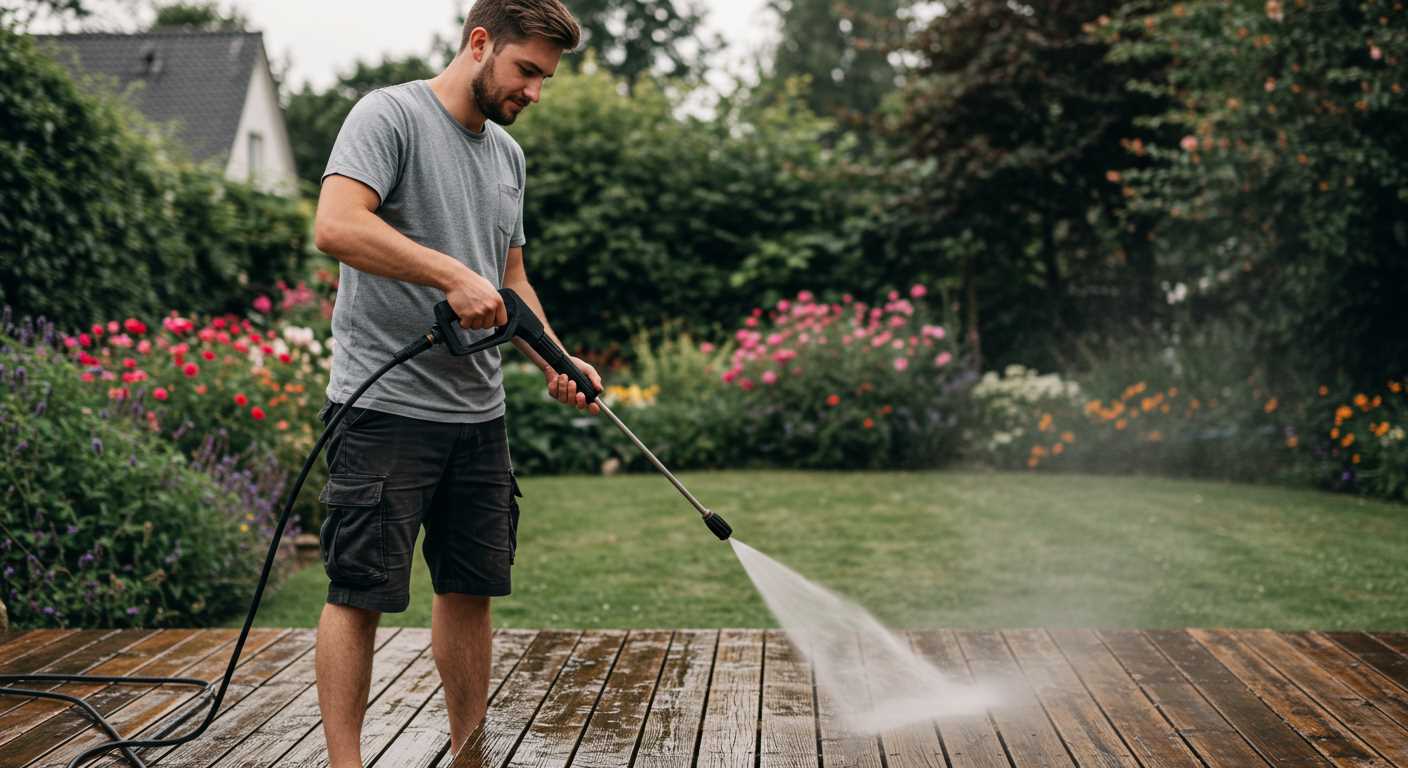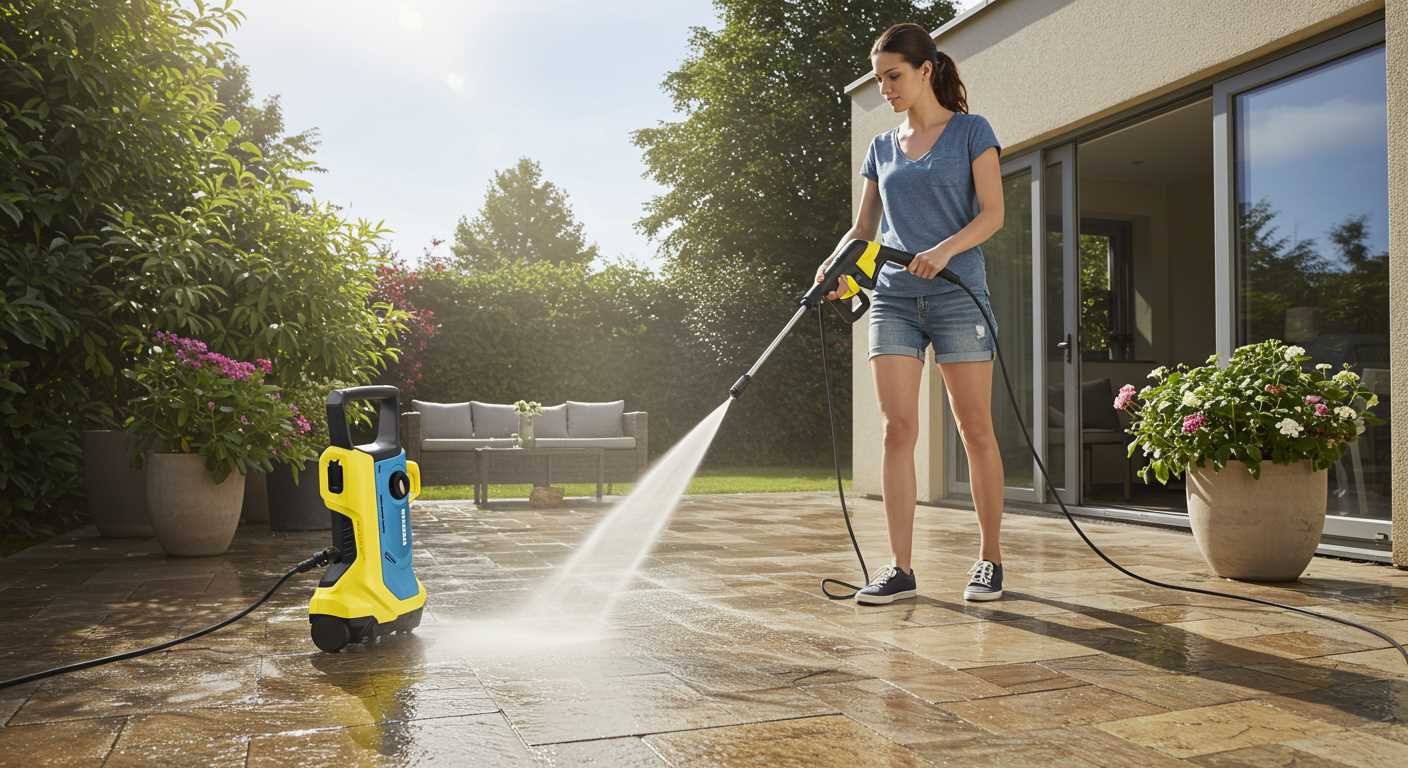



For optimal results, I recommend selecting a 25-degree nozzle for most general cleaning tasks. This option provides a balanced spray pattern that handles various surfaces effectively, striking a perfect compromise between pressure and area coverage. Whether you’re tackling dirt on your patio or washing your vehicle, this nozzle will meet your needs without causing damage.
If you’re dealing with tougher stains or grime, consider utilising a 15-degree nozzle. This configuration delivers a concentrated stream that can cut through stubborn residues, making it suitable for tougher surfaces like concrete or brick. However, be mindful of the potential to cause surface damage; always test in a small area first.
For delicate surfaces or tasks requiring gentler handling, such as cleaning windows or painted areas, the 40-degree nozzle is the ideal choice. It disperses water over a wider area, minimising the risk of streaks or scratches while still allowing for effective cleaning. This is particularly useful when cleaning vehicles or garden furniture, where gentleness is paramount.
Recommendations on Nozzles for High-Pressure Cleaning Equipment

For optimal performance, I recommend using nozzles that match the task at hand. The primary types are:
- 0-degree nozzle: Produces a focused jet of water. It’s ideal for tough stains on concrete or metal surfaces but must be used with caution to avoid damage.
- 15-degree nozzle: Offers a narrow spray pattern, suitable for removing paint or stubborn grime. Best for bricks and paving stones.
- 25-degree nozzle: A versatile option that balances power and coverage, perfect for general cleaning of decks, patios, and vehicles.
- 40-degree nozzle: Provides a wide spray, useful for delicate surfaces like windows and wooden decks to prevent damage.
- Soap nozzle: Low-pressure attachment designed for applying detergent effectively. Useful for pre-treating surfaces before using a higher-pressure nozzle.
Choosing the right spray attachment can significantly affect cleaning efficiency and safety. Always match the nozzle’s angle to the material and type of stain for best results.
Many models come with adjustable nozzles, allowing for a quick change between spray patterns. If not, I suggest investing in a complete set for versatility in your cleaning tasks.
Finally, consider the pressure rating of your equipment. High-pressure nozzles may not be suitable for low-powered machines, potentially leading to leaks or failures. Ensure compatibility before starting your cleaning project.
Understanding Different Nozzle Types
For optimal cleaning, know your nozzle types. Each serves a unique purpose, ensuring the job meets your expectations. Start with a zero-degree nozzle, perfect for intense cleaning on tough surfaces like concrete. Its concentrated spray can remove stubborn stains but requires a safe distance to avoid damage.
The 15-degree variant excels at removing paint and grime from wood and metal. Its wider spray pattern allows for slightly less pressure while maintaining effectiveness. Ideal for surfaces that need cleaning without extreme depth, this nozzle is versatile.
Further Options
The 25-degree nozzle balances intensity and surface protection, making it suitable for vehicles, outdoor furniture, and most fences. It provides a broader spray pattern than the previous two, ensuring gentle yet effective cleaning.
For delicate tasks, the 40-degree nozzle is your best bet. Washing windows or vehicles requires low pressure to avoid damage, and this nozzle provides just that. It covers a larger area while ensuring a gentle touch. Knowing these specifics greatly enhances your cleaning capabilities.
How to Choose the Right Nozzle Size for Your Project

Selecting the nozzle size directly impacts the outcome of any cleaning task. Generally, narrower apertures provide a concentrated stream, ideal for tough stains like grease or mildew. A 0° nozzle typically delivers this focused jet, making it suitable for removing deeply embedded dirt on surfaces such as concrete.
On the other hand, wider openings, like those used in 25° or 40° nozzles, disperse the water over a larger area, which is perfect for broader applications. If you’re facing delicate surfaces, such as wooden decks or painted areas, these nozzles reduce the risk of damage while still offering effective cleaning.
The size of the nozzle, combined with the flow rate and pressure of your equipment, influences the cleaning speed and quality. For example, a higher flow rate allows for quicker washing with a certain nozzle. Matching the nozzle size to the project scale is essential for efficiency; larger surfaces benefit from wider nozzles to cover more ground in less time.
Assess the specific materials you’re tackling. For more abrasive surfaces, opt for a smaller size to ensure thorough cleaning without excessive force. Conversely, for washing vehicles or delicate items, choosing a larger size will help prevent potential harm.
Keep in mind the distance from the surface as well. Longer reach nozzles enable cleaning from a safer distance, minimising splatter and risk of damage. During my experience, applying the correct size not only optimises performance but also enhances the lifespan of both the surface being cleaned and the equipment itself.
Comparing the Functions of 0°, 15°, 25°, and 40° Nozzles
The selection of nozzle angle significantly affects performance. The 0° nozzle excels at providing a concentrated stream of water, best suited for tackling challenging stains on durable surfaces like concrete. Use it sparingly; the high-intensity jet can cause damage to softer materials.
The 15° variant offers increased versatility. Ideal for stripping paint or cleaning heavily soiled areas, it balances power and spread effectively. While still providing a strong pressure, it can be employed on tougher surfaces without excessive risk of harm.
Mid-range Angles
For general cleaning tasks, the 25° nozzle is a reliable choice. It delivers moderate pressure with a wider fan pattern, making it perfect for cleaning vehicles, decks, and patios. This configuration eliminates grime without compromising the integrity of the surfaces.
The 40° nozzle is a gentle option, designed for delicate jobs like washing windows or rinsing off outdoor furniture. The gentle spray covers a larger area, making it incredibly efficient for light cleaning while minimizing the risk of damage to fragile surfaces.
Conclusion
Each nozzle serves its own purpose. Selecting the right one depends on the specific task: opt for the 0° for tough stains, the 15° for stripping, the 25° for general cleaning, and the 40° for delicate items. Understanding their functions allows for optimal results in cleaning projects.
Identifying the Best Nozzle for Cleaning Various Surfaces
For optimal cleaning results, I recommend using a 25° nozzle for most general tasks on surfaces like concrete, wood, and driveways. This nozzle strikes a balance between power and safety, effectively removing dirt without damaging the material.
When tackling delicate surfaces, such as car paint or window screens, opt for a 40° tip. This wider spray pattern distributes pressure more evenly, preventing scratches while still achieving cleanliness.
On tough stains, like oil or grease on concrete, the 15° attachment works remarkably well. Its focused stream provides a vigorous clean, making it ideal for stubborn spots.
For vertical surfaces, such as fences or walls, I suggest switching between the 25° and 15° nozzles depending on the thickness of the grime. The 25° is effective for regular maintenance, while the 15° can be used to address more significant build-up.
In scenarios involving softer materials like siding, the 40° nozzle can be employed to prevent any potential damage while still ensuring a clean appearance.
Remember to adjust your choice of nozzle based on the specific cleaning needs of each project for the best results.
Tips for Maintaining and Storing Nozzles
Always clean nozzles after each cleaning session. Residue can clog the orifices, affecting performance. Use a soft brush or a cloth soaked in warm soapy water to gently scrub off any debris.
Store nozzles in a dry, cool place to prevent wear and tear. A dedicated container for nozzles can keep them organized and protected from damage. Avoid leaving them in direct sunlight or exposed to moisture.
Check the O-rings regularly. These small rubber components ensure a proper seal. If you notice any cracks or hardening, replace them immediately to maintain optimal pressure and prevent leaks.
Use a low-pressure setting when rinsing off the nozzles during maintenance. This helps to avoid any unwanted force that could dislodge components or damage delicate parts.
Inspect for wear signs, such as uneven spray patterns or decreased pressure. If performance diminishes, consider replacing the nozzle to sustain effectiveness and efficiency in your tasks.
| Maintenance Activity | Frequency | Recommendation |
|---|---|---|
| Clean nozzles | After each use | Use warm soapy water and a soft brush |
| Check O-rings | Monthly | Replace if cracked |
| Inspect for wear | Every use | Replace if performance is low |
| Store in a container | Always | Keep in a cool, dry place |
Common Mistakes to Avoid When Using Pressure Washer Nozzles
Choosing the wrong nozzle can lead to damage or inadequate cleaning results. Always match the nozzle to the surface to prevent chipping or stripping paint. For delicate areas, opt for a wider spray pattern.
Incorrect Spray Angle Selection

A frequent error is using a narrow spray angle on surfaces that require gentler treatment. A 0° nozzle can easily damage wood or soft siding. It’s essential to assess the material before deciding.
Neglecting Nozzle Maintenance
Clogged or damaged nozzles result in uneven pressure and inefficiency. Regularly clean the tips and ensure there are no debris blockages. This simple upkeep extends the life of your equipment.







